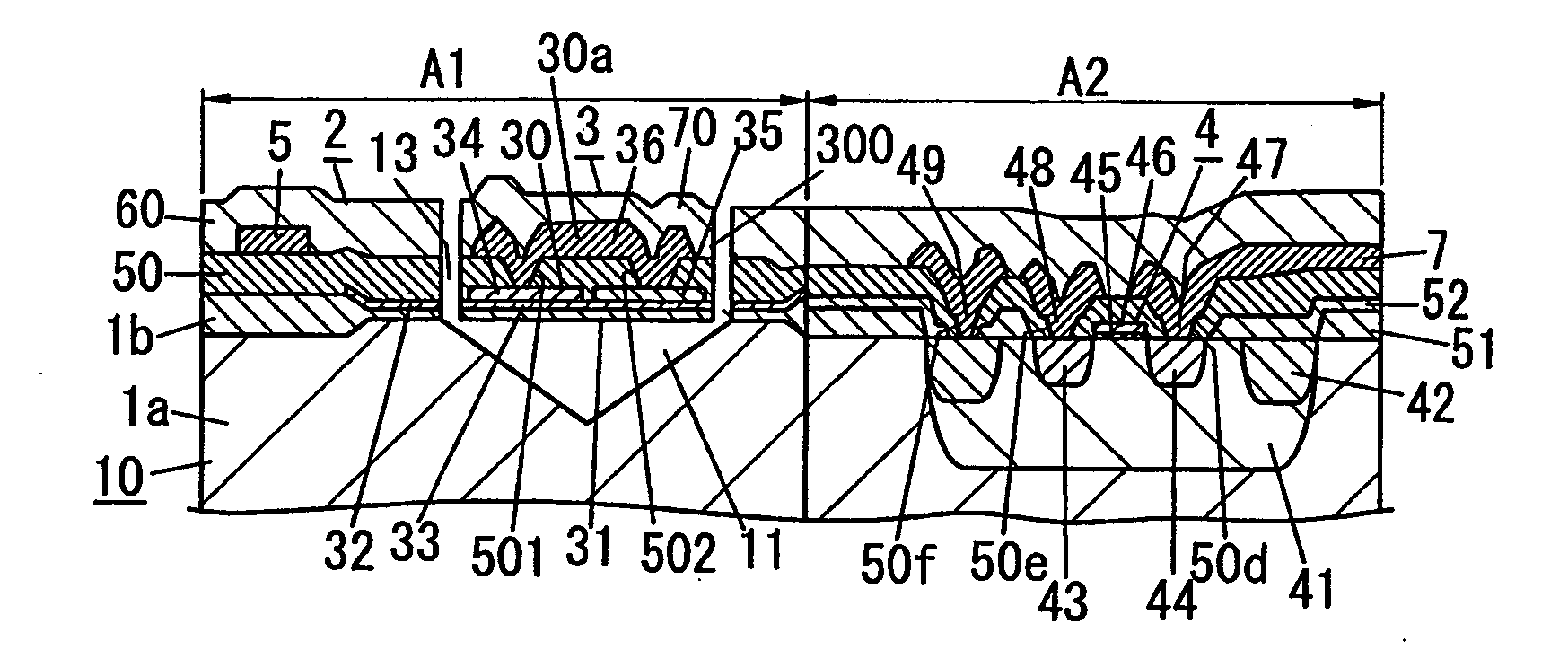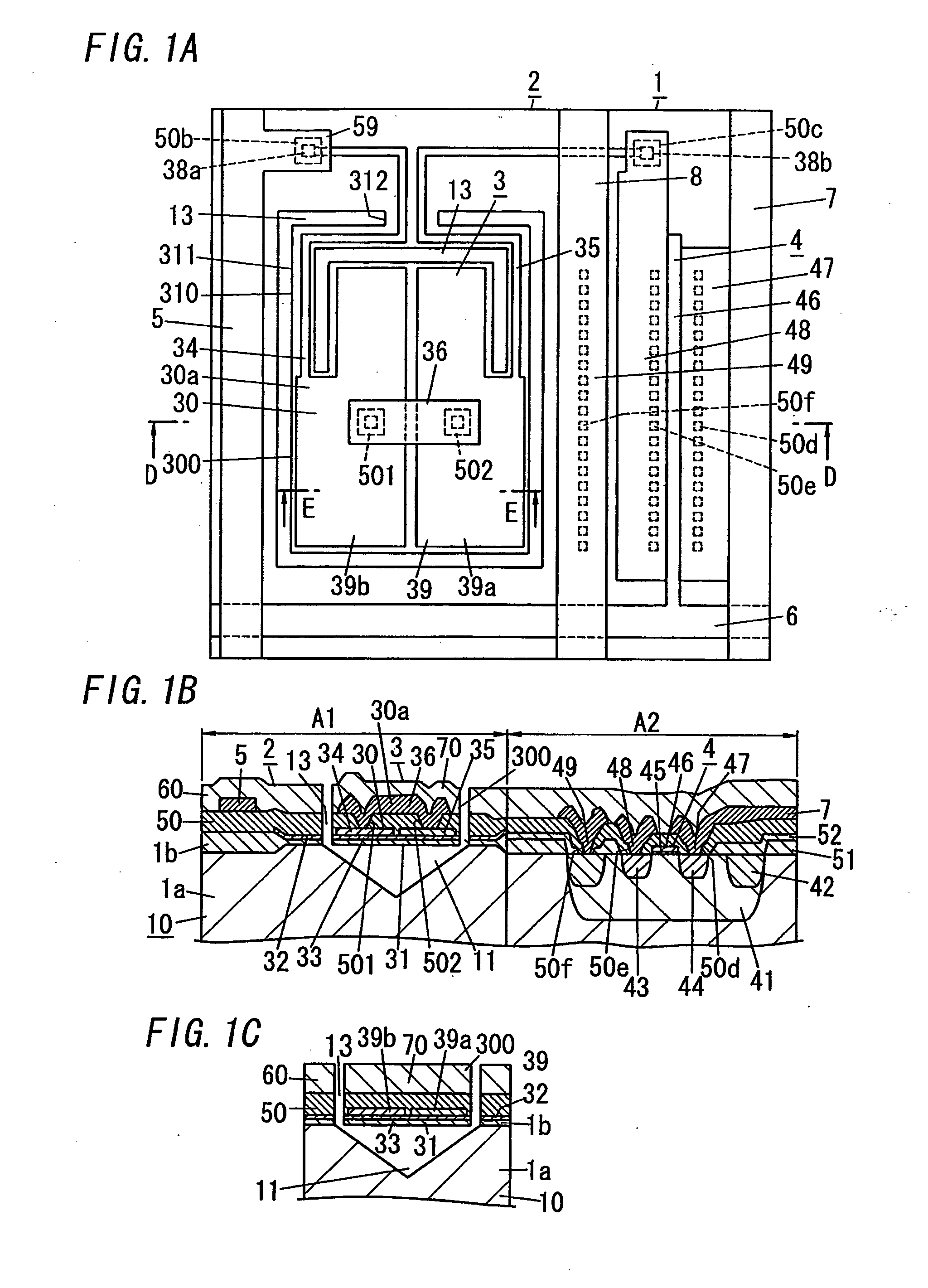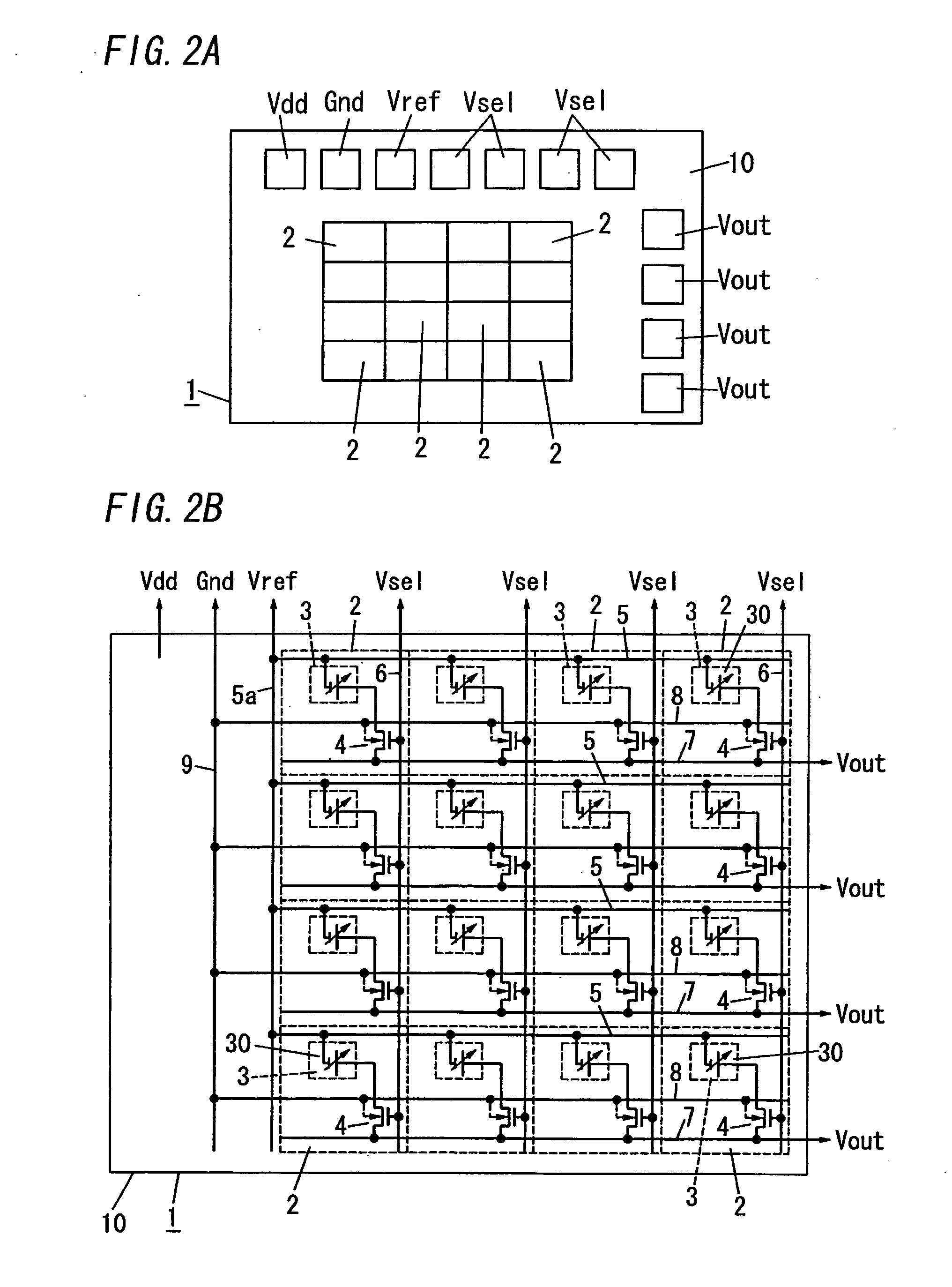Infrared Sensor
a technology of infrared sensor and infrared sensor, which is applied in the field of infrared sensor, can solve the problems of infrared sensor structural stability and low sensitivity, increased power consumption, and infrared detection element is likely to suffer from warp, so as to prevent improve the fabrication yield. , the effect of preventing the breakage of infrared sensor
- Summary
- Abstract
- Description
- Claims
- Application Information
AI Technical Summary
Benefits of technology
Problems solved by technology
Method used
Image
Examples
first embodiment
[0093]The infrared sensor 1 of the present embodiment is an infrared image sensor (infrared array sensor). As shown in FIGS. 1 and 2, the infrared sensor 1 includes a base (base substrate) 10 used as a basement, and a plurality of cells (pixels) 2 arranged on a first surface (upper surface, in FIG. 1B) of the base 10 in an array (two dimensional array, in the illustrated instance) manner. The cell 2 includes a thermal type infrared detection element 3 including an infrared absorption member 33 and a temperature detection member 30, and a MOS transistor 4 defined as a switching element for pixel selection.
[0094]In the present embodiment, m by n (4 by 4, in the illustrated instance) pixels 2 are formed on the first surface of the single base 10. The number, arrangement, or both of the pixels 2 is not limited to the present embodiment. Besides, in FIG. 2B, an equivalent circuit of the temperature detection member 30 is illustrated as a power source.
[0095]The infrared sensor 1 includes ...
second embodiment
[0149]The infrared sensor 1A of the present embodiment is different from the infrared sensor 1 of the first embodiment in the pixel 2A and the temperature detection member 30A. Configurations common to the infrared sensor 1A and the infrared sensor 1 are designated by the same reference numerals, and no explanations thereof are made.
[0150]Each of the pixels 2A is provided with no MOS transistor 4.
[0151]The temperature detection member 30A includes the four thermocouples 30a each of which includes an n-type polysilicon layer 34, a p-type polysilicon layer 35, and a connection layer 36. The second end of the p-type polysilicon layer 35 of the thermocouple 30a is connected to the second end of the n-type polysilicon layer 34 of the thermocouple 30a next thereto by use of a connection layer 37 made of a metal material (e.g., Al—Si). As described in the above, the four thermocouples 30a are connected in series with each other to constitute a thermopile.
[0152]The aforementioned thermopile...
third embodiment
[0160]The following explains the infrared sensor 1B of the present embodiment with reference to FIGS. 13 to 37.
[0161]The infrared sensor 1B of the present embodiment is mainly different from the infrared sensor 1 of the first embodiment in the thin film structure 300B. Besides, components common to the infrared sensor 1B and the infrared sensor 1 are designated by the same reference numerals, and no explanations thereof are made.
[0162]In the infrared sensor 1B, as shown in FIGS. 15 and 25, the 8 by 8 pixels 2 are formed over the first surface of the single base 10. The number and arrangement of the pixels 2 are not limited.
[0163]Besides, in FIG. 15, the pixel selections Vsel, the reference bias pad Vref, the ground pad Gnd, the output pads Vout, and the like are illustrated, with no distinction, as pads 81.
[0164]FIG. 26 shows the infrared sensor module including the infrared sensor 1B (infrared array sensor module). This infrared sensor module includes the infrared sensor 1B, the si...
PUM
 Login to View More
Login to View More Abstract
Description
Claims
Application Information
 Login to View More
Login to View More - R&D
- Intellectual Property
- Life Sciences
- Materials
- Tech Scout
- Unparalleled Data Quality
- Higher Quality Content
- 60% Fewer Hallucinations
Browse by: Latest US Patents, China's latest patents, Technical Efficacy Thesaurus, Application Domain, Technology Topic, Popular Technical Reports.
© 2025 PatSnap. All rights reserved.Legal|Privacy policy|Modern Slavery Act Transparency Statement|Sitemap|About US| Contact US: help@patsnap.com



